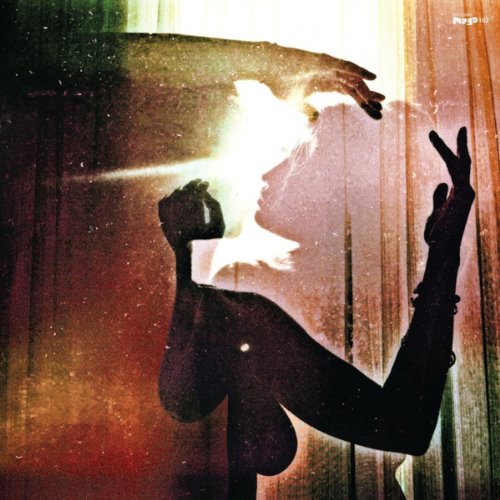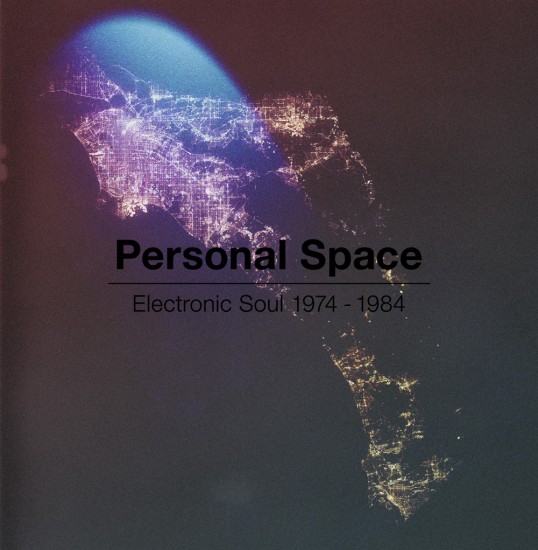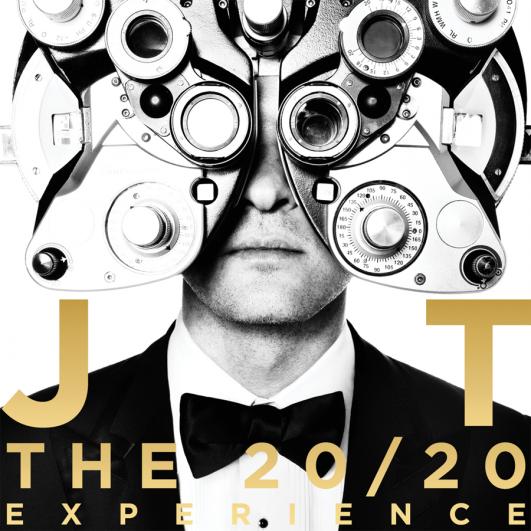Locust- You’ll Be Safe Forever (Editions Mego, 2013)
Locust is the name that composer/musician Mark Van Hoen recorded under around the turn of the millennium, producing a series of influential (and highly regarded) albums between 1993 and 2001. The records blended squelchy IDM gestures with deep, rich tones of analog synthesizers, spinning slow-burn melodies out of static and noise and waves of electronics.
Now, after years of releases under his own name, Van Hoen and New York musician Louis Sherman have joined forces, and re-activated the Locust brand. And in doing so, they’ve created a record worthy of the legacy – each of these 13 tracks is a mesmerizing stew of analog pulses, echoing wordless voices, and steady keyboard drones mixing with bits of glitch and crackle.
And each track brings something slightly different to the table: “Strobes” is all distorted vocal samples, phased FX, and funky breakbeat; “Just Want You” stomps its way through a field of cybernetic wildflowers; “Oh Yeah” floats along on a bed of skittering percussion and seductive whispers; “Subie” takes a Krautrock foundation and filters it through a deep, dubby haze of chemical smoke.
Van Hoen and Sherman mix the worlds of downtempo, techno, and experimental synthesizer musics with aplomb, and in doing so, create a sound all their own; if ‘ambient dancing’ is possible, this is the soundtrack for it.
You’ll Be Safe Forever will be released on April 16th as a download, on CD, and on vinyl.
Various Artists – Personal Space: Electronic Soul 1974-1984 (Chocolate Industries, 2013)
Don’t be misled by the relatively sedate cover art, this disc contains some of the most bizarre music you’ll hear this year (or any other). I’m used to thinking of 70s electronic music as being the domain of analytical Germans and austere Englishmen, but the artists here took the same equipment and bent it in a much groovier direction – the high-collared shirts and narrow seams of Kraftwerk’s robots are swapped for bell-bottoms and picked-out afros. Each track is like a radio signal from a parallel universe where 70s social programs brought primitive drum machines into inner-city schools, and community centers were stocked with Arp synthesizers instead of ping-pong tables. Taken as a whole, this album provides an all-you-can-eat buffet of weirdly lo-fi computer noises: if Detroit Techno was, as Derrick May once famously said, “like George Clinton and Kraftwerk stuck in an elevator”, this is more like the sound of Sly Stone and OMD getting wasted in someone’s living room while the tape keeps running. There are moments that bring to mind the music of Stevie Wonder or Curtis Mayfield, but without the expense accounts and equipment to make things come together just so; the lyrical imagery is drawn in crayon, and the budget stretches only far enough for a few slinkys and a 9 volt battery. Each tune combines familiar elements and emerges with unexpected results; a series of blind launches and magnificent near-misses. You can feel the musicians’ ambitions outpacing their abilities, and it’s exhilarating to hear the effort, and the brilliant (if sometimes misguided) attempts at making something unique.
And every now and then, a song or a sound gives a flash of insight on how pop music developed: a kid tries to record the next Superfly in his bedroom, an aspiring singer demoes a slow jam on his Sears keyboard, a self-taught musician gets stoned while watching Tron and sets out to recapture that feeling on tape. As we listen to synth/drum-machine funk jam after synth/drum-machine funk jam, we start to see how Prince could burst on the scene in the early 80s and have such an enormous impact – because he nailed the formula in a way that nobody else did, combining all these elements in just the right way. Synthesized noises and programmed drums are an expected element in today’s funk and soul, but this is ground zero – glimpses of moments where these worlds first collided. These tracks veer between triumph and tragedy, and that’s the appeal: we get to listen in on how ordinary people used new technology, we discover long-lost mad scientists of small-town home studios, we hear pieces coming together and forming a sound that echoes through mainstream R&B to this day.
Personal Space is now available on CD or vinyl.
Justin Timberlake – The 20/20 Experience (RCA Records, 2013)
There was a lot of hype leading up to the release of this album. A WHOLE LOT of hype. Viral marketing, commercials, TV appearances, announcements of announcements leading up to reveals, every trick in the publicists’ handbook as well as a few new ones invented especially for the occasion. It would’ve been easy to grow weary of the entire idea of a new JT album before hearing more than one song, especially given how unavoidable that first song (“Suit And Tie”) was if you did things like surf the internet, watch TV, listen to the radio, or set foot in a public place.
And that’s a pity. Because while I like “Suit And Tie” more upon repeated listenings, as a first single / thesis statement, it’s not so great. It’s a decent pop single with an underwhelming Jay-Z guest verse and a backing track that pulls from the usual Timberlake playbook of rewriting “Off The Wall” in new and different ways. Once I gave it close inspection, I could notice and appreciate the intricacies of Timbaland’s production, the echoing flying-saucer percussion, and the way the brass and vocals and fingersnaps zig-zag to and fro… But when heard in a supermarket or on a car stereo, it’s simply another super-slick club track, polished almost to the point of invisibility.
So I adjusted my expectations downward a bit, while still maintaining hope for the best. And when the album arrived in my inbox, I held my breath and started listening.
My expectations were not only demolished, they were washed away completely and a deco-futuristic tower of chandeliers and laser-swathed dancefloors and jet-elevators and bass bins decked out in tinsel and LEDs was immediately constructed in their place. (And that’s just what I could see from the moment I entered. Further inspection revealed the underwater make-out room in the basement, the soda counter under the stairs, and the rocket launchpad on the roof.)
All the elements that made Futuresex/Lovesounds such a classic are here in abundance: the first track “Pusher Love Girl” manages to include a headnodding verse, a sky-scraping string-drenched bridge, stuttering percussion, swaths of holographic temptresses, and a central lyrical metaphor that gets stretched to absurd extremes in every imaginable direction. Each tune unfolds in sections, featuring extended intros, midsections, and/or aftermaths that contain enough unique ideas to spin off into completely different songs. Timberland is pushing the envelope of production once again, keeping the mix simple while juggling a ridiculous array of sounds and elements, inventing new backdrops and flipping through them without a hint of preciousness or reverence. He shapes the songs, lets them grow and develop, and adjusts his approach accordingly every step of the way. And Timberlake is not only in fine voice, he manages to be both seductive and disarmingly chumpish at every step, conveying a personality that’s both leading man and lovable underdog. He delivers heartfelt decelerations wrapped in utter absurdities, and never gives in to the commonplace turn of phrase when there’s something cooler or crazier available. (Example: rather than sing a standard come-hither R&B number about his car, he invites the listener into his “Spaceship Coupe” for an intimate encounter amongst the stars, and includes every imaginable sci-fi reference and ham-fisted double entendre along the way.)
‘That Girl’ is straight-ahead doo-wop for a land of jetpacks and androids, “Let The Groove Get In” drops a computer discotheque into the middle of a Rio carnival parade, and “Mirrors” is the summation of the album, a sparkling soul track that concludes the Timberlake/Timbaland trilogy of maximalism that began with “Cry Me A River” on Justified and continued with “What Goes Around/Comes Around” on Futuresex/Lovesounds. It rides in on a rhythm track built from samples of vocal beatboxing, leaps off with a soaring melody, swoops earthward for an epic breakdown, and climbs a day-glo digital rainbow to a city in the clouds.
So yes, JT and Timbaland have done it again. They’ve lived up to the high standards that they set on previous albums, and more importantly, they do it while reveling in the wonder of making music. This disc is not just an all-inclusive futuristic sound confection, it’s a brilliant swirl of all that’s stupid and glorious about 21st century pop songs, delivered with total sincerity and not a hint of seriousness.
The 20/20 Experience is now available for download, on vinyl, and on CD.




1 comment for “Album Reviews: Locust, vintage electronic soul, Justin Timberlake”